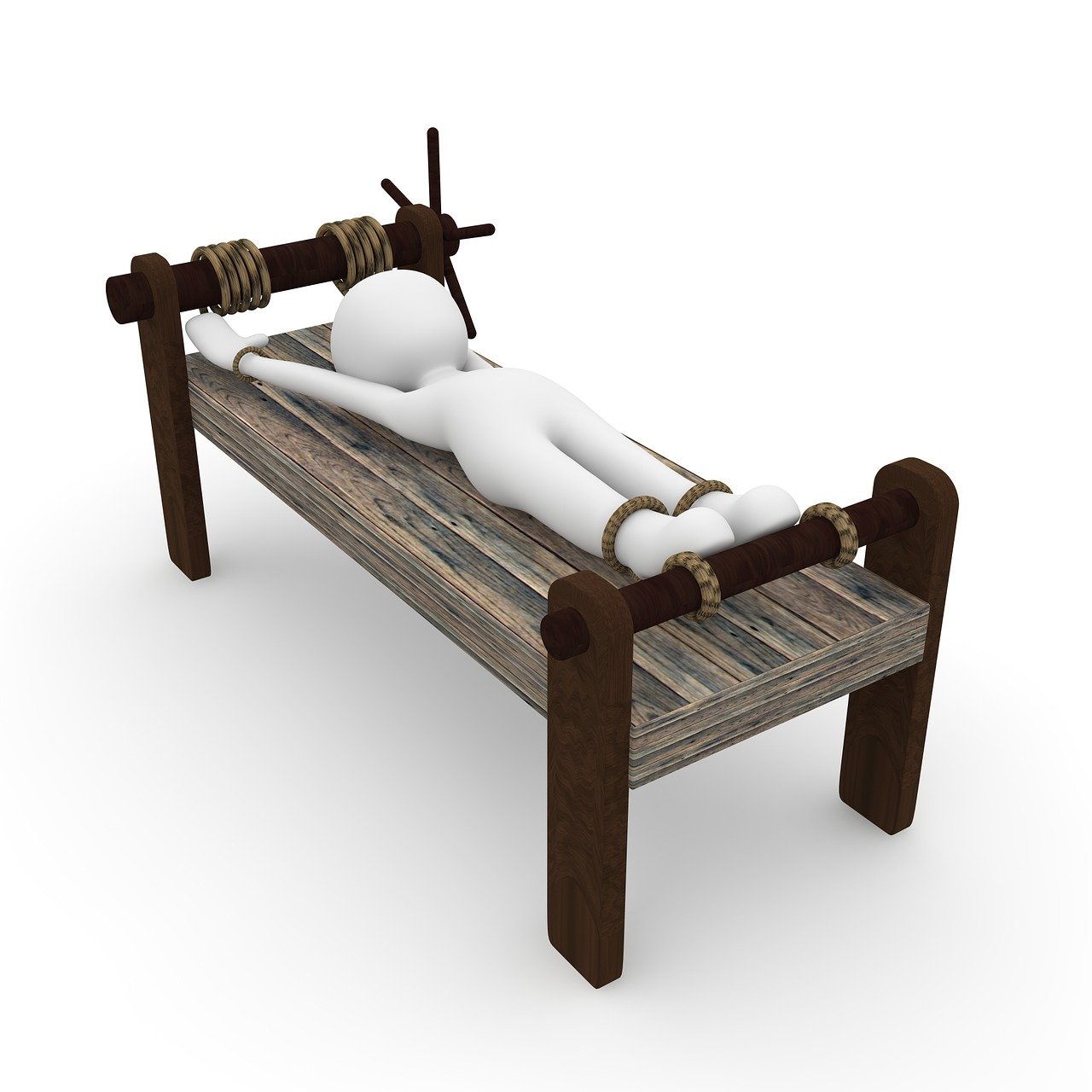
Torture is the torment that is inflicted on a person using different instruments and methods.
Torture is torment inflicted on someone through various methods and instruments . Its purpose is usually to obtain a confession or function as punishment for the tortured, although it can also be carried out as sadistic pleasure on the part of the torturer.
Torture, from the Latin torture , consists of intentionally causing serious physical or psychological pain to someone . With this pain, an attempt is made to break the resistance and morale of the tortured, stripping him of his integrity.
Broken bones, mutilations, cuts, burns , electric shocks and drowning are some of the most common physical torture. As for psychological torture, it can include verbal humiliation, manipulation or falsification of information about the victim's loved ones, sensory deprivation and any other mechanism that attempts to destroy moral resistance.
Torture throughout history
The notion of torture changed throughout the history of humanity; In this way, punishments that today are considered torturous were previously accepted or tolerated. It was not until 1984 that an international treaty called the Convention against Torture and Other Cruel, Inhuman or Degrading Treatment or Punishment was established, which pursues torture as a crime .
Some governments , however, find ways to evade international regulations prohibiting torture. A common procedure is to consider a suspect or common criminal as a highly dangerous individual who requires the armed forces for his arrest and custody. The military proceeds to interrogate him according to their methods and, if torture takes place there, he is excluded from criminal action since the ordinary Justice does not have jurisdiction over military actions.

There are multiple forms of torture.
Some examples
Let's look at some of the most atrocious tortures in history:
- Water torture: It consisted of tying a person with barbed wire and covering their mouth with cloth to prevent them from vomiting, and then introducing water through their nostrils, causing their stomach to expand and causing their abdomen to expand. hurt with the barbs of the wire. Inevitably, the victims moved suddenly, faced with the terrible sensation of being about to explode, and this caused further external damage to various parts of the body. Literally, death came when their stomach exploded.
- The Chinese drop: The victim was immobilized lying face up, under a device that dropped drops of cold water on his forehead at 5-second intervals. After several hours, the constant dripping caused damage to their skin. However, the essence of the torture lay in the desperation that the tortured person felt at the impossibility of sleeping, given the endless noise of the water hitting his skull, or of drinking, especially after a few days. Ultimately, the cause of death was cardiac arrest.
- The bull of Falaris: To carry out this torture, used by the Inquisition in various torture rooms between the 16th and 18th centuries , they built an effigy of a bull to a tyrant called Falaris and locked the group of victims inside it. They were then burned alive. It is said that its screams, which could be heard through the figure's mouth, seemed to be emitted by the animal itself, as if it were mooing.
- Crucifixion: Without a doubt, given the weight of Christianity in the world, this is the first form of torture that many of us learn about, probably without understanding how terrible it really was. Crucifixion consisted of tying or nailing a person to a wooden cross, or to two logs or a wall, and leaving them there until they stopped breathing. It was especially used by the ancient Romans until 337 AD. C. , although today it is still valid in some places.
